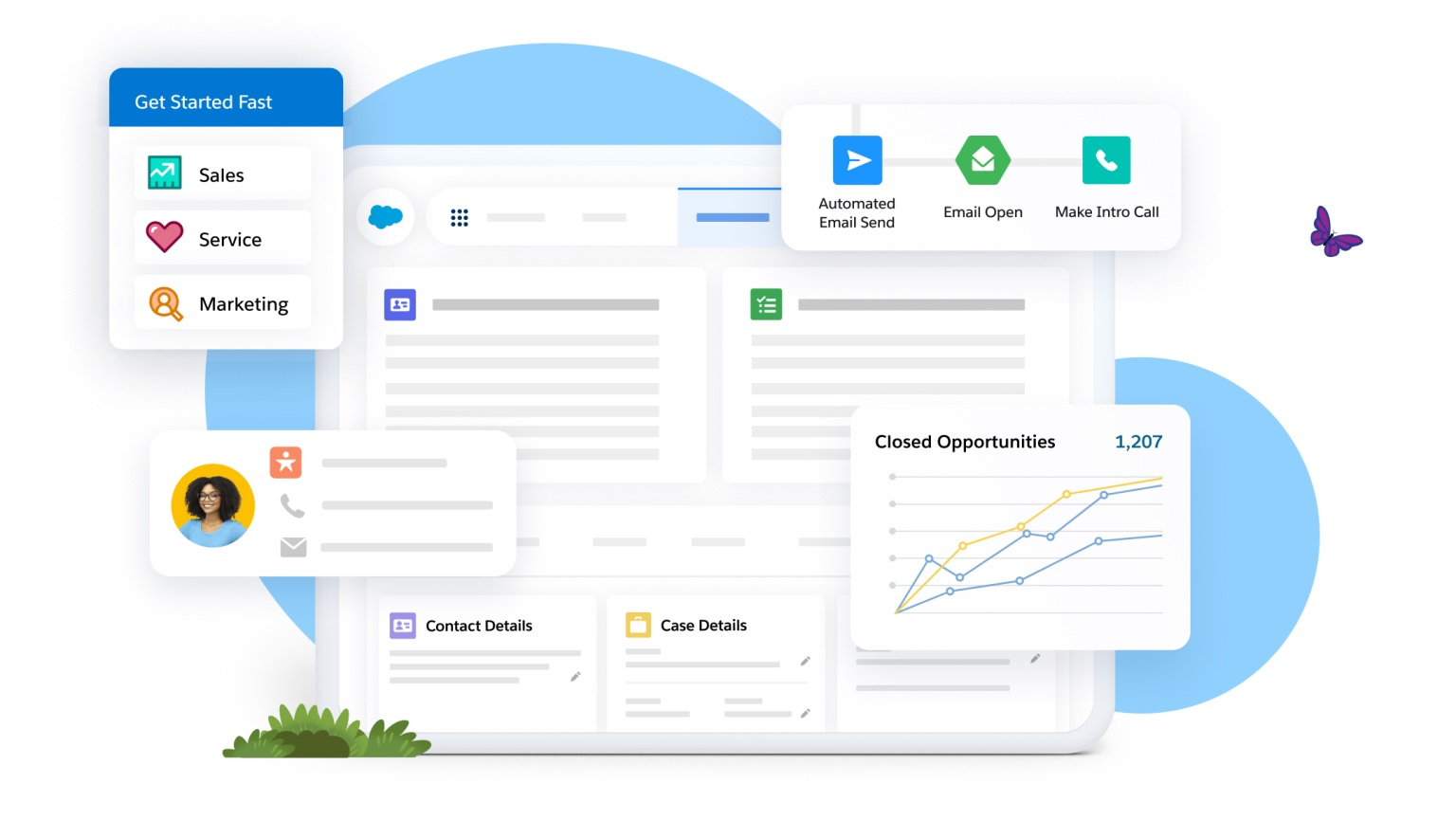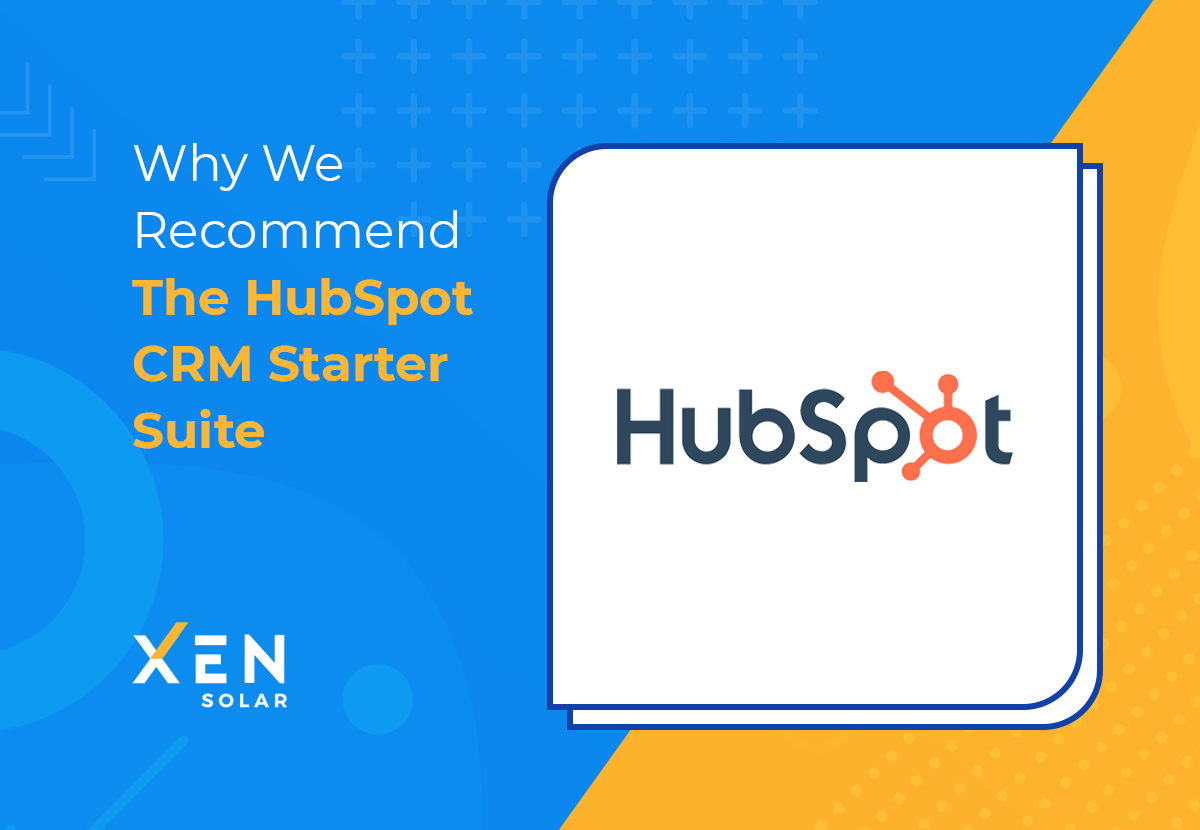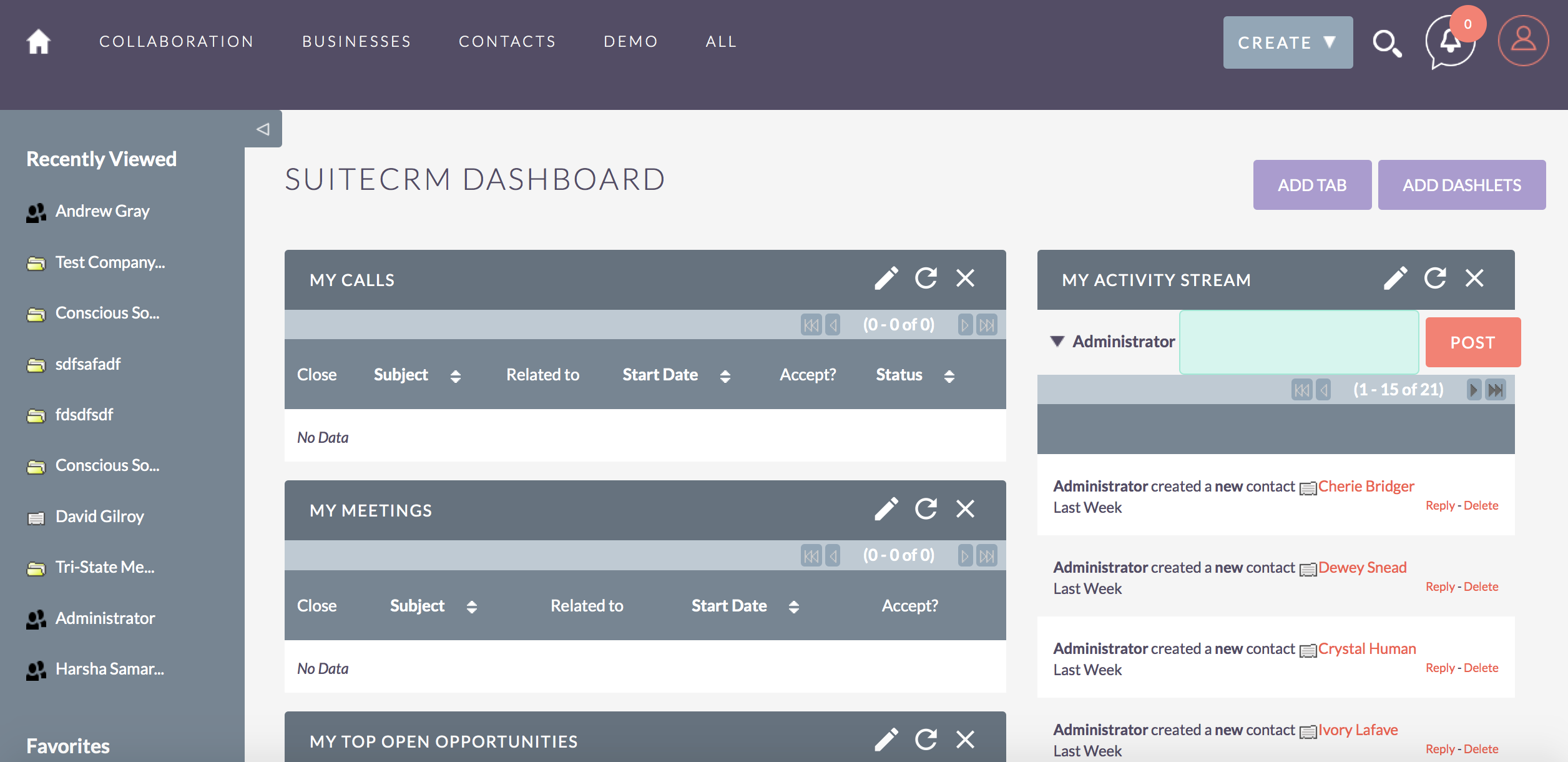In the realm of customer relationship management (CRM), the CRM suite starter emerges as an indispensable tool, empowering businesses of all sizes to cultivate meaningful connections with their clientele. This comprehensive guide delves into the intricacies of CRM suite starters, providing a roadmap for choosing, implementing, customizing, integrating, managing, and evaluating these powerful systems.
With a CRM suite starter at your disposal, you gain the ability to streamline operations, enhance customer satisfaction, and drive business growth. Whether you’re a seasoned CRM professional or just starting your journey, this guide will equip you with the knowledge and strategies you need to harness the full potential of CRM suite starters.
CRM Suite Starter Overview
A CRM suite starter is a collection of basic customer relationship management (CRM) tools that are designed to help small businesses manage their customer interactions and data. CRM suite starters typically include features such as contact management, lead tracking, sales tracking, and customer service.
CRM suite starters can be a valuable tool for small businesses because they can help them to:
- Improve customer relationships by tracking customer interactions and providing a central repository for customer data.
- Increase sales by providing tools to track leads and sales opportunities.
- Improve customer service by providing tools to track and resolve customer issues.
However, CRM suite starters also have some limitations. They are typically not as comprehensive as more expensive CRM systems, and they may not have all of the features that a small business needs. Additionally, CRM suite starters can be complex to implement and use, and they may require a significant investment of time and resources.
Benefits of Using a CRM Suite Starter
- Improved customer relationships
- Increased sales
- Improved customer service
- Centralized customer data
- Affordable
- Easy to use
Limitations of Using a CRM Suite Starter
- Not as comprehensive as more expensive CRM systems
- May not have all of the features that a small business needs
- Can be complex to implement and use
- May require a significant investment of time and resources
Choosing the Right CRM Suite Starter
Selecting the most suitable CRM suite starter necessitates careful consideration of several crucial factors. These include the size of your organization, your industry, your specific business needs, and your budget.
Various CRM suite starter options are available, each with its own set of features and capabilities. Some popular options include Salesforce Essentials, HubSpot CRM, Zoho CRM, and Microsoft Dynamics 365 Sales.
Comparative Analysis of CRM Suite Starter Options
To help you make an informed decision, here is a comparative analysis of these four popular CRM suite starter options:
| Feature | Salesforce Essentials | HubSpot CRM | Zoho CRM | Microsoft Dynamics 365 Sales |
|---|---|---|---|---|
| Contact Management | Yes | Yes | Yes | Yes |
| Lead Management | Yes | Yes | Yes | Yes |
| Opportunity Management | Yes | Yes | Yes | Yes |
| Sales Forecasting | Limited | Yes | Yes | Yes |
| Customer Support | Limited | Yes | Yes | Yes |
| Price | $25 per user per month | Free | $12 per user per month | $35 per user per month |
Implementing a CRM Suite Starter
Implementing a CRM suite starter can help businesses streamline their customer relationship management processes and improve their customer experience. However, it’s important to carefully plan and execute the implementation process to ensure a successful outcome.
The following steps are involved in implementing a CRM suite starter:
- Define your goals and objectives.What do you want to achieve with your CRM system? How will it help you improve your customer relationships?
- Choose the right CRM suite starter.There are many different CRM suite starters available, so it’s important to choose one that meets your specific needs and budget.
- Plan your implementation.This includes gathering your data, creating a timeline, and assigning roles and responsibilities.
- Migrate your data.This can be a complex process, so it’s important to work with a qualified professional.
- Train your users.Make sure your users are properly trained on the new CRM system.
- Go live.Launch your new CRM system and start using it to manage your customer relationships.
- Monitor and evaluate your results.Track your progress and make adjustments as needed.
Best Practices for Data Migration
Data migration is one of the most important steps in the CRM implementation process. Here are some best practices to follow:
- Cleanse your data before migrating it.This will help to ensure that your new CRM system is populated with accurate and up-to-date data.
- Use a data migration tool.This can help to automate the migration process and reduce the risk of errors.
- Test your data migration.Make sure that your data is migrated correctly before you go live with your new CRM system.
Best Practices for User Adoption
User adoption is critical to the success of any CRM implementation. Here are some best practices to follow:
- Get buy-in from your users.Make sure that your users understand the benefits of the new CRM system and are on board with the implementation.
- Provide training and support.Make sure that your users are properly trained on the new CRM system and have access to ongoing support.
- Make the system easy to use.The new CRM system should be easy to use and navigate, so that your users can quickly become proficient in using it.
Tips for Maximizing the Value of a CRM Suite Starter
Here are some tips for maximizing the value of your CRM suite starter:
- Use the system to its full potential.Take advantage of all the features and functionality that your CRM system has to offer.
- Integrate your CRM system with other business applications.This can help to streamline your workflows and improve your efficiency.
- Use your CRM system to track your customer interactions.This will help you to identify opportunities to improve your customer service.
- Use your CRM system to generate reports.This can help you to track your progress and identify areas for improvement.
Customizing a CRM Suite Starter
To align a CRM suite starter with unique business needs, customization is essential. This process involves modifying the starter’s features, functionality, and user interface to enhance its effectiveness for specific requirements.
CRM suite starters offer various customization options, enabling businesses to tailor the solution to their processes, data structures, and user preferences. These options may include:
Custom Fields and Objects
- Creating custom fields to capture specific data points not included in the starter’s default fields.
- Establishing custom objects to represent unique entities or data types relevant to the business.
Workflow Automation
- Automating business processes by defining triggers, actions, and conditions using workflow rules.
- Streamlining repetitive tasks, improving efficiency, and reducing manual errors.
Dashboards and Reports
- Creating custom dashboards to display key performance indicators (KPIs) and provide real-time insights.
- Developing custom reports to extract specific data and generate insights tailored to business requirements.
User Interface
- Modifying the user interface by adding or removing tabs, fields, and sections.
- Customizing page layouts to improve usability and align with user preferences.
Integration with Other Systems
- Integrating the CRM suite starter with other business systems, such as accounting, marketing automation, or e-commerce platforms.
- Creating a seamless flow of data and eliminating the need for manual data entry.
Successful CRM suite starter customizations have resulted in improved customer experiences, increased sales productivity, and enhanced operational efficiency. For instance, a manufacturing company customized its CRM starter to track customer equipment usage and maintenance history, leading to reduced downtime and improved customer satisfaction.
Integrating a CRM Suite Starter

Integrating a CRM suite starter with other business systems offers numerous benefits, including streamlined processes, improved data accuracy, and enhanced customer experiences. Different types of integrations are available, including:
- Data synchronization:Automatically exchange data between the CRM suite starter and other systems, such as ERP or marketing automation platforms.
- Process automation:Trigger specific actions or workflows based on events or data changes within the CRM suite starter.
- Custom integrations:Develop tailored integrations to meet specific business requirements.
To plan and execute CRM suite starter integrations effectively, consider the following steps:
- Define integration goals:Determine the specific objectives and benefits you aim to achieve through the integration.
- Identify integration points:Determine which data, processes, or systems need to be integrated.
- Choose integration tools:Select the appropriate tools or platforms to facilitate the integration.
- Develop integration plan:Artikel the steps, timelines, and resources required for the integration.
- Test and monitor:Thoroughly test the integration to ensure accuracy and functionality, and monitor its performance over time.
By following these steps and considering the various types of integrations available, you can effectively integrate your CRM suite starter with other business systems, maximizing its value and driving business success.
Managing a CRM Suite Starter

Managing a CRM suite starter involves ongoing tasks that ensure its effectiveness and alignment with business objectives. These tasks include data maintenance, user support, and performance optimization.
Data Maintenance
Data maintenance is crucial for maintaining data accuracy and integrity within the CRM suite starter. Regular data cleansing, such as removing duplicate or outdated records, is essential. Data entry should follow established guidelines to ensure consistency and completeness. Additionally, regular data backups safeguard against potential data loss.
User Support
Providing adequate user support is essential for ensuring user adoption and satisfaction. Training and documentation should be provided to help users understand the system’s capabilities and best practices. Technical support should be readily available to address any issues or questions users may encounter.
Feedback mechanisms allow users to provide input and suggest improvements.
Performance Optimization
Monitoring the performance of the CRM suite starter is essential for ensuring optimal functionality. Regular performance audits can identify bottlenecks or areas for improvement. System updates and upgrades should be applied promptly to address performance issues and incorporate new features.
Data optimization techniques, such as indexing and compression, can enhance performance and reduce system load.
Evaluating a CRM Suite Starter
Evaluating a CRM suite starter is crucial to ensure it meets your business needs and drives desired outcomes. This involves tracking key metrics, assessing success through various methods, and making data-driven decisions based on the results.
Key Metrics to Track
- Customer Acquisition Cost (CAC): Measures the cost of acquiring new customers through the CRM.
- Customer Lifetime Value (CLTV): Estimates the total revenue a customer is expected to generate over their lifetime.
- Sales Conversion Rate: Tracks the percentage of leads converted into paying customers.
- Customer Satisfaction (CSAT): Assesses the overall satisfaction of customers with the CRM and its services.
- Return on Investment (ROI): Calculates the financial benefits gained from implementing the CRM compared to its cost.
Methods for Evaluating Success
Evaluating CRM suite starter success involves multiple methods, including:
- KPIs and Metrics: Tracking key performance indicators (KPIs) and metrics to measure progress towards specific goals.
- Customer Feedback: Collecting feedback from customers through surveys, reviews, and support interactions.
- Sales Performance Analysis: Analyzing sales data to assess the impact of the CRM on sales efficiency and effectiveness.
- Return on Investment (ROI): Calculating the financial return generated by the CRM implementation.
- Competitive Benchmarking: Comparing the performance of the CRM to industry benchmarks and competitors.
Making Data-Driven Decisions
Once the evaluation results are gathered, it’s crucial to make data-driven decisions to optimize the CRM suite starter. This involves:
- Analyzing the data: Interpreting the evaluation results to identify areas for improvement.
- Setting goals: Establishing specific, measurable, achievable, relevant, and time-bound (SMART) goals based on the data.
- Making adjustments: Implementing changes to the CRM based on the data and goals, such as adjusting settings, processes, or integrations.
- Tracking progress: Monitoring the impact of the adjustments made and making further refinements as needed.
Last Word
In conclusion, CRM suite starters offer a transformative solution for businesses seeking to elevate their customer interactions. By embracing the insights and best practices Artikeld in this guide, you can effectively implement, customize, integrate, manage, and evaluate your CRM suite starter, unlocking a wealth of benefits that will propel your business forward.
Remember, a successful CRM implementation is an ongoing endeavor that requires continuous monitoring, evaluation, and refinement. By staying abreast of industry trends and leveraging the latest technologies, you can ensure that your CRM suite starter remains a cornerstone of your customer-centric strategy.
FAQ Compilation
What is a CRM suite starter?
A CRM suite starter is a foundational software package that provides core CRM functionality, such as contact management, sales tracking, and customer support.
What are the benefits of using a CRM suite starter?
CRM suite starters offer numerous benefits, including improved customer satisfaction, increased sales productivity, enhanced operational efficiency, and data-driven decision-making.
How do I choose the right CRM suite starter for my business?
Consider factors such as your business size, industry, budget, and specific requirements when selecting a CRM suite starter. It’s also advisable to conduct thorough research and consult with industry experts.
How do I implement a CRM suite starter successfully?
Successful CRM implementation involves careful planning, data migration, user training, and ongoing support. It’s crucial to establish clear goals, secure buy-in from stakeholders, and continuously monitor progress.

